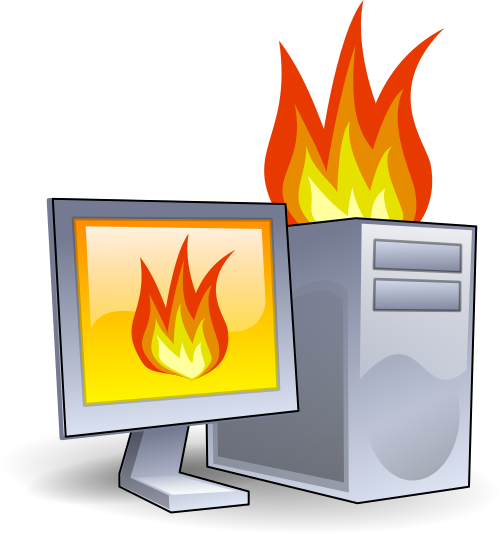Low Energy Mining: Save Electricity and Beat the Heat
Let's face it. The idea of your crypto miners heating your home is a lot less appealing when it's not the dead of winter. And, unless you have very cheap electricity, energy bills can make you want to quit mining altogether. Today, I'm going to talk about some coins you can mine that will keep your home cool and your bills low.
DISCLAIMER: This is not financial advice. I mine for fun, not for profit, and I'm not claiming you, personally, will profit from anything I talk about in my posts.
All of my mining equipment is in my home office. And, I work from home. It's currently autumn where I am, and even in this relatively cool weather, it's not unusual for my office to be in the mid-80-degree range (Fahrenheit) when my miners are going full blast. That alone--not even considering how expensive my electricity is--has inspired me to look for cryptocurrencies that require small amounts of energy to mine.
It turns out that there are quite a few coins out there that claim to be "low energy" or "green", and some of them even live up to that promise. I'm going to discuss a few of them below, along with the pros and cons of mining each one.
However, I should warn you that, like in all of life, you get what you pay for. The price of any crypto tends to gravitate toward the cost of the energy required to mine that currency. For that reason, coins that don't cost too much to mine also don't tend to have a high market value. Still, low energy mining can be worth it as a fun way to be involved in the crypto scene, or for the fact that you may be able to beat your electricity bill with the profits (which I do not guarantee).
With that in mind, here are a few of my favorite low-energy coins.
Bitcoin Low Energy
Bitcoin Low Energy, or BLE, is a really smart project that has been largely overlooked. The goal of BLE was to create what their website calls "A Coinchain on top of a Blockchain".
The BLE Whitepaper explains this concept very thoroughly, but this basically means that BLE's blockchain is linked to another publicly available blockchain (in this case, the Bitcoin blockchain). In order to build a BLE block, an element must be taken from the most recent block of the linked blockchain and incorporated into BLE's block. This essentially makes the linked blockchain act as what BLE's devs call a "metronome" for BLE itself.
I've always found this concept hard to explain, but what it means for those of us mining it is pretty simple: Every time a Bitcoin block is produced, BLE miners go into action to mine a corresponding BLE block. However, some of the work of securing the blockchain is borrowed from Bitcoin, so the mining period for BLE is only about a minute. At that point, a new BLE block is minted, and the miners go idle until the next Bitcoin block is found.
The developers claim that this approach uses 5 times less energy than Bitcoin, and, from my own experience, I think that's probably true.
The downside to BLE is just that it hasn't been well adopted. It trades on a couple of small exchanges, and has a small community, but its price has never really taken off. This is largely due to the lack of effort its devs have put into marketing. It's a brilliant idea, in my opinion, and I hope that some future development team forks it and markets the idea into a more popular blockchain. Imagine if BLE had smart contracts!
In the meantime, you can still mine BLE, and the energy costs are very small. In addition to the main website, where you can find links to a wallet and a reference miner, there's more information about BLE on Bitcointalk, and one of the BLE mining pools has created optimized CPU and GPU miners for BLE as well.
Burstcoin
Burstcoin is another cryptocurrency in which mining happens in short bursts (hence the name), with idle time in between mining sessions. The big difference is that, instead of using a traditional Proof of Work algorithm, Burstcoin uses a concept that it calls Proof of Capacity--capacity, in this case, meaning hard drive space.
The idea of Proof of Capacity, or PoC, is that most of the mining work is done ahead of time. Hard drive space (or entire hard drives) that you devote to mining Burstcoin have to be "plotted" before you can use them, and the "plotting" mechanism is where most of the difficult cryptographic computation takes place, and it can take as long as a week to plot a large hard drive (though using a GPU can make things faster). Once these computations are finished, the actual mining uses a very lightweight algorithm. You can find out more on the Burstcoin Wiki.
Burstcoin is one of the few low energy coins that has, at least in the past, been worth a fair amount on the market. I think this is because the Proof of Capacity concept requires investing money into hard drive space, and as difficulty goes up, the amount of capacity needed to mine goes up as well.
Burstcoin, unfortunately, has had some setbacks, including the original community falling apart, and some flaws being discovered in the original Proof of Capacity algorithm. However, new devs have stepped in to fix the problems, and a new community is forming. If you have some extra hard drives lying around, and a small Windows or Linux computer to hook them up to, mining Burstcoin can be a lot of fun. Personally, I mined it for a long time, and am thinking of returning now that the bugs have been fixed.
As a note, Proof of Capacity is a very different concept than that of coins like STORJ that reward you for being part of a distributed data store. PoC just fills your disks with precomputed data used to secure the blockchain. I've never trusted the idea of letting strangers store arbitrary data on my equipment, so PoC seems like a great alternative to me.
The main Burstcoin site seems to be down at the moment, but check out the Burstcoin subreddit, the Burstcoin Wiki, and the Burstcoin forums for all the information you need to start mining.
Just a quick side note: I recently noticed a new cryptocurrency that's also using Proof of Capacity, but on a more Ethereum-like blockchain, called SPOCK. I haven't researched it yet, but it may be worth checking out if the idea of low-energy hard drive mining appeals to you.
Epic Cash
I've written about Epic Cash in a previous Steemit post, so I won't go into too much detail here (but please check out that post for more detail about the project, if you'd like).
What makes Epic Cash a good low-energy coin is the fact that it uses three mining algorithms, but each block is only mineable with one algorithm. That means that you can mine Epic Cash with one of its algorithms, and your miner will be idle while blocks that use the other two algorithms are mined.
These proportions will change over time, but currently, 60% of blocks use RandomX, which is currently CPU-only; 38% of blocks use ProgPow, which is only efficiently computable on GPUs, and 2% use Cuckatoo31+, which is intended for ASIC miners. I like to mine Epic Cash using ProgPow, meaning my GPUs are idle 62% of the time, but I still can mine a decent number of coins.
The biggest downside to Epic Cash right now is that it's not very user friendly. The introduction of a GUI wallet helped, but mining can still be somewhat difficult to set up. The project is progressing slowly, but I'm optimistic that things will get easier as more development happens.
You can find everything you need to mine Epic Cash at the official site. I also recommend checking out TT-miner if you intend to mine Epic Cash with a GPU.
Zilliqa
Zilliqa, or ZIL, is a really interesting emerging cryptocurrency backed by an impressive team. It supports smart contracts, and the team is providing incentives to developers to create dApps. It uses an entirely original blockchain technology, and overall it seems set to be a major player.
What's great about ZIL for miners is that it is very, very low-energy. The mining algorithm used by ZIL is Ethash--the very same Ethash that's used to mine Ethereum and its various forks. However, ZIL makes use of a "sharded" Proof of Work architecture (of which, I have to admit, I only have a rudimentary understanding). This architecture means--according to the Zilliqa wiki--that any individual miner only mines for 1-2 minutes every 2-3 hours. I've tried mining ZIL, and that's absolutely true.
Additionally, ZIL's DAG is still quite small, so ZIL can be mined on 4GB GPUs which can no longer be used for Ethereum. If you have a 6GB GPU or better, you also have the option of mining ETH in between ZIL mining periods (though that defeats the low-energy advantage).
The downside to mining ZIL is that since you're not mining very often, you won't be mining many coins--and the coins don't have a very high market value yet. Still, I think this is only the beginning for ZIL, and mining a small bag of ZIL might be worth it. (Again, this is not a guarantee of any kind.)
You can read a lot of very technical information at the main Zilliqa site, and there are some easier-to-use instructions for mining ZIL on one of the ZIL pools.
Final Thoughts
There are certainly other low-energy mining options out there, but I wanted to present a sampling of what I think are some of the best and the most innovative low-energy cryptocurrencies today.
Do you know of any other low-energy blockchains or mining techniques (other than posting on Steemit, of course)? Let me know in the comments.




Congratulations @zyzzyva! You have completed the following achievement on the Steem blockchain and have been rewarded with new badge(s) :
You can view your badges on your Steem Board and compare to others on the Steem Ranking
If you no longer want to receive notifications, reply to this comment with the word
STOPTo support your work, I also upvoted your post!
Vote for @Steemitboard as a witness to get one more award and increased upvotes!